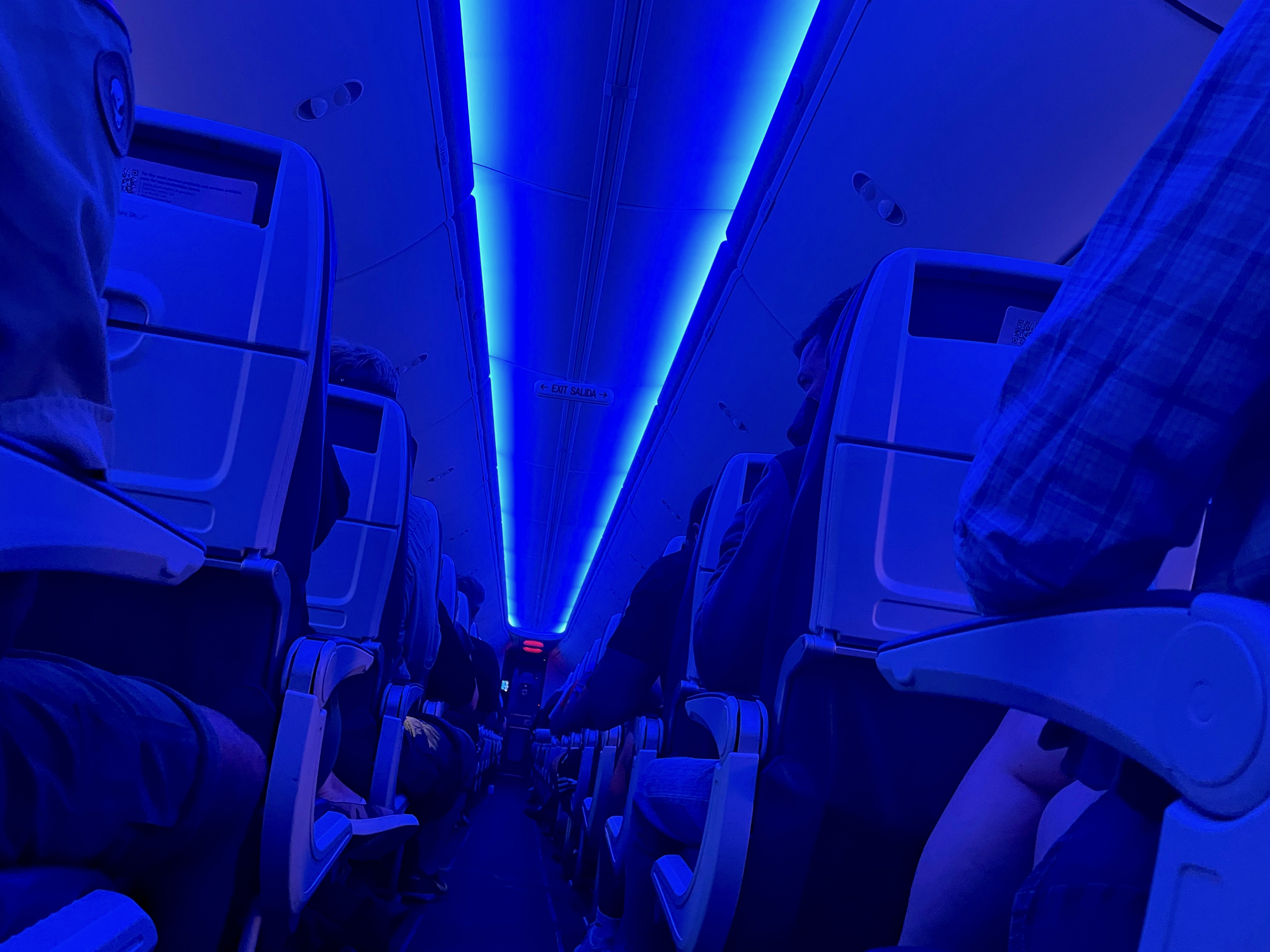5 min read
Southwest Airlines plans to start assigning seats, breaking with 50-year tradition
 Merit Street Media
|
Jul 25, 2024
Merit Street Media
|
Jul 25, 2024

Dallas — Goodbye, cattle call.
Southwest Airlines said Thursday that it plans to drop the open-boarding system it has used for more than 50 years and will start assigning passengers to seats, just like all the other big airlines.
The airline said it has been studying seating options, running tests and surveying customers. Southwest discovered that preferences have changed over the years and the vast majority of travelers now want to know where they are sitting before they get to the airport.
Southwest’s unusual boarding process started as a fast way to load passengers and limit the time that planes and crews spend sitting idly on the ground, not making money. It helped the airline operate more efficiently and even squeeze a few more flights into the daily schedule.
It was one reason that Southwest alone among U.S. airlines remained profitable every year until the coronavirus pandemic.
Here’s how it works: Instead of being assigned a seat when they buy a ticket, Southwest customers check in exactly 24 hours before departure to secure their spots in boarding lines. In the beginning, the first 30 to check in were put in the coveted “A” boarding group, guaranteeing them a window or aisle seat. Dawdlers landed in “B,” which was still OK, or “C,” which would often result in a middle seat.
The system became less democratic over time as Southwest let people pay extra to guarantee a spot near the front of the line. Despite that, many Southwest loyalists still love open seating. The airline thinks they will adapt.
“I know there are going to be customers who say, ‘I want to stay with open seating.’ It’s a minority,” Southwest CEO Robert Jordan told CNBC, “but we had the same thing when we switched from plastic boarding passes. We had the same thing when we took peanuts out of the cabin. I’m convinced we can win them over.”
The airline said surveys showed that 80% of its customers — and 86% of “potential” customers — want an assigned seat. Jordan said open seating was the top reason that travelers cited for choosing another airline over Southwest.
Some Southwest passengers reacted with sadness and disappointment to news that open seating is going away.
“Hearing that announcement today, I was like, no, this is my favorite part of Southwest,” said Lindsey Magness, who works in college athletics in Oklahoma City.
Magness said that with open seating, she can try for a window seat or, depending on her mood, an aisle. And assigned seating doesn’t always work either. Magness said American Airlines seated her away from her husband on their honeymoon trip earlier this summer
Brandon Bowser of Odenton, Maryland, said he flies on different airlines based on which one has the best deal, but he has found Southwest’s open boarding to be faster and less complicated than other airlines.
“The convenience that comes with being able to pick your own seat is what sets Southwest apart and makes them sort of a preferred airline,” he said. “A lot of my friends swear by Southwest, that’s all they will fly, and they are completely irate about this decision.”
At Chicago’s O’Hare Airport, Kimberly King was happy to learn of the change. She was at a check-in kiosk with her four children for a flight home to California.
”I used to fly United a lot and I liked the assigned seats, especially with kids, kind of expecting and knowing where we were going to be,” King said. “The only reason really why I continue to fly Southwest is for the free bags.”
Southwest still lets passengers check two bags for free. It's been a centerpiece of the airline's advertising campaigns for years. CEO Jordan said Southwest has no plans to end bags-fly-free “at this point.”
There are drawbacks to Southwest boarding. It's hard to get a good spot in line without paying an extra fee. Southwest executives said 60% of passengers check in the first 30 seconds. Those who miss the rush fear there won't be room in the overhead bins for their carry-on bag. Late boarders can struggle to see an open seat anywhere, and start roaming up and down the aisle — Southwest calls them “spinners.”
There are a number of tricks that passengers use to game the system.
Some take advantage of early boarding for people who need extra time. Others ignore the age limit (6 or under) for children in families that are allowed to board right after the “A” group. Once on the plane, some passengers hold choice seats for mates who are far behind them in line.
Photos appear occasionally on social media of an unusually large number of people in wheelchairs at Southwest gates. They get to board early.
“It’s certainly one of the things that anger people even if it doesn’t have a material impact on them,” said Brett Snyder, a travel agent and author of the Cranky Flier blog. “In some cases those are people who have absolutely legitimate reasons. In other cases, it’s the ‘Jetway Jesus’ phenomenon.”
That’s a reference to recoveries so miraculous that the disability causing the person to need a wheelchair to reach the gate is cured during flight, and they walk off the plane like everybody else.
Snyder doubts that fans of open seating will abandon Southwest.
“Those people will still fly Southwest,” he said. “They may grumble about it, but there's no one else they can go to that has open seating."
In addition to the boarding change, Southwest also plans to convert about one-third of the seats on its planes to premium seating with more legroom, matching a practice that is standard among other large U.S. carriers.
The airline's newest schedule also includes a few redeye flights — a first for Southwest.
The overnight flights will start in mid-February on nonstop routes including Las Vegas to Baltimore and Orlando; Los Angeles to Baltimore and Nashville; and Phoenix to Baltimore. More routes will be added over time, the airline said.
The changes come as Southwest is under pressure from Elliott Investment Management. The hedge fund argues that the airline lags rivals in financial performance and has failed to change with the times. It wants to replace Jordan and Chairman Gary Kelly.
Southwest also faces increased scrutiny from the Federal Aviation Administration after a series of worrisome flights, including one that dove within 400 feet of the ocean off Hawaii, two that flew at extremely low altitudes while still miles from landing at airports in Oklahoma and Florida, and another that was discovered to have rudder-area damage after an unusual “Dutch roll” wiggle during a flight.
Southwest announced the seating move and other changes on the same day that both it and American Airlines reported a steep drop in second-quarter profit despite higher revenue. Airlines are struggling with higher costs and reduced pricing power, especially on flights within the United States, as the industry adds flights faster than the growth in travel demand.
Southwest, based in Dallas, said its second-quarter profit fell 46% from a year earlier, to $367 million, as higher costs for labor, fuel and other expenses outstripped an increase in revenue. The results met Wall Street expectations.
American Airlines also reported a 46% drop in profit, to $717 million. CEO Robert Isom said the airline was held back by a sales strategy that it is now rolling back and by an oversupply of domestic flights.
American said its earnings per share in the third quarter will be break-even, well below Wall Street's expectation of 48 cents per share. American also cut its forecast of full-year earnings to between 70 cents and $1.30 per share, down from a previous prediction of $2.25 to $3.25 per share.
Shares of the leading U.S. airlines rose Thursday. Southwest Airlines Co. gained 5.5% and American Airlines Group Inc., based in Fort Worth, Texas, rose 4%. Delta, United, Alaska and JetBlue also gained.
Copyright Associated Press

